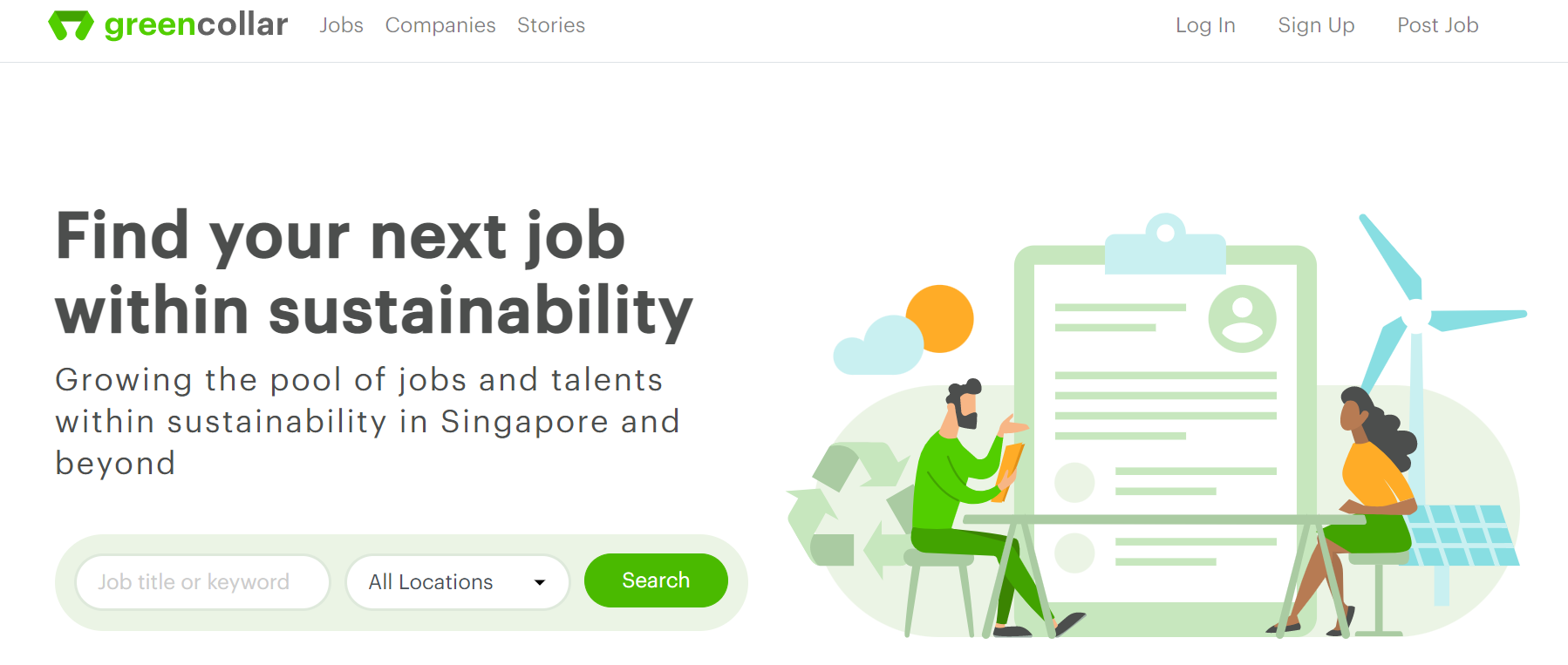Green New Hiring

How can we tell if a firm is genuinely green or merely greenwashing? In recent years, firms have been stepping up their efforts to go green and promising to be sustainable and eco-friendly. However, some firms engage in greenwashing, whereby they appear to be more sustainable than they actually are, while masking their actual environmental impacts.
How can we then verify a firm’s environmental efforts?
There are several ways to measure the environmental impact of a firm, such as measuring its carbon emissions or the number of new green jobs it creates. The environmental, social, and governance (ESG) rating is probably the most popular method to rate firms in this way. However, traditional ESG ratings do not provide data on a firm’s investment in green human capital.
Hence, together with Assistant Professor Michael Shen from the National University of Singapore, Associate Professor Kelvin Law and Assistant Professor Alper Darendeli from Nanyang Technological University have written the paper Green New Hiring, which introduces a new sustainability measure.
'Some companies market themselves as green or environmentally friendly, but that does not mean they are. So, Alper, Michael, and I teamed up to see if we could find a better way to measure how well companies practice what they preach', said Professor Kelvin.

Green Score
The paper proposes an action-based measure, the Green Score, to capture firms’ investment in green human capital based on mentioning green or environmental skills in their job postings. The premise of the paper is that a firm that makes more effort to be sustainable will require people to execute a firm’s environmental policies. In particular, the paper examines the relationship between a firm’s Green Score and its profitability and innovation.
The Issue with Traditional Environmental Ratings
Before we dive into the Green Score, let us review the issues with traditional environmental ratings to better understand why our researchers have devised a new measure. First, traditional environmental ratings, such as ESG ratings, are not action-oriented, as they rely mostly on the firm’s disclosure. Therefore, these ratings are more subject to greenwashing as a firm can cover up its environmentally irresponsible actions by providing inaccurate information. Additionally, there are output-based metrics such as carbon dioxide emissions, that measure a firm’s carbon footprint by the tons of carbon dioxide emissions produced, which is mostly applicable to industries burning fossil fuels for energy or production. Alternatively, the Green Score is action-based as it considers a firm’s hiring actions, making it more versatile across industries and less biased than firm disclosures.
'Measuring carbon dioxide emissions is a good metric, but it does not cover all the industries out there. So, we came up with the Green Score, which is action-based and covers a broad range of firms from different industries and is less subject to greenwashing', said Professor Alper when probed on why they developed the Green Score.

How do we obtain a firm’s Green Score?
The researchers utilised data from an employment data analytics firm, Burning Glass Technologies, which draws on the online job postings of US firms, to help identify jobs that require green skills. A firm’s Green Score is the concentration of green skills in that firm’s green job postings in a specific year. Green skills are environment-related skills such as pollution reduction, sustainable procurement and environmental compliance.
Professor Alper commented on the limitations of the Green Score, 'We are not claiming that our measure is perfectly capturing human capital, but to some extent, it captures the hiring actions of a firm. Also, our measure complements the other traditional measures out there by providing incremental information about a firm’s environmental efforts.'.
The Real Effect of Green Hiring
The main findings show that firms that increase their green hiring (Green Score) have increased levels of future profitability and generate more high-quality green patents. By analysing the financial statements of firms with green jobs, the researchers find that the increase in profitability is attributed to enhanced sales and net profit margins. This could be due to the rising demand for sustainable goods in the market. For instance, firms with higher Green Scores are ready to create more green products and services, hence attracting more eco-conscious and green consumers.

Furthermore, firms that hire more people with green skills are more likely to generate high-quality green patents. A green patent refers to the intellectual property rights to environmental technologies, such as waste management, wind power and solar energy. Green innovations (green patents) also positively contribute to a firm’s profitability.
The researchers found that the oil, gas, and coal industry in the US has the highest Green Score, indicating that the nature of their business model or public awareness of environmental issues has led them to hire more people with green skills. This suggests that these companies are under pressure to improve their environmental performance and are taking steps to do so by investing in the skills and knowledge of their workforce.
Hence, as more employees are equipped with green skills, this not only increases a firm’s profitability but also enhances a firm’s reputation and competitiveness. Going green improves a firm’s image, as it shows consumers that firms care about the environment rather than just making profits. In return, firms gain a competitive advantage by differentiating from competitors with poor sustainability efforts. Whereas firms that engage in greenwashing may end up with public criticism, hence hampering their reputation. Furthermore, greenwashing can result in a firm going through problematic and expensive lawsuits due to false claims.
Green Hiring Efforts in Singapore
In Singapore, the finance sector is leading in the recruitment of green workers as of 2021, paving the way for Singapore to become a Green Finance Hub. Furthermore, there was a 15% increase in Singapore’s green hiring in 2021 (ETHRSEA, 2022). The Singapore Government plays a crucial role in facilitating these trends. In 2020, the Ministry of Sustainability and the Environment expected 55,000 new and upgraded jobs to be created over the next ten years (Tan, 2020) as Singapore pursues sustainable development.
'Although our paper only focuses on green hiring in the US, we also observe similar trends in Singapore. Moreover, there are more job portals to keep track of green jobs here in Singapore and even Asia', Professor Alper remarked.
 Screenshot is taken from the Green Collar website
Screenshot is taken from the Green Collar website
One notable job portal is Green Collar, which provides green jobs based in Singapore and neighbouring Asian countries such as Malaysia and Indonesia. Launched in 2020, firms or individuals can also share job listings on the website. The green jobs seen on Green Collar extend to firms in various industries, such as manufacturing, tourism and even the education sector (Green Collar, n.d.). For instance, there are several green jobs created at local universities, due to the launch of new sustainable projects or centres.
Are all Green Jobs the same?
For jobseekers seeking meaningful careers, one can detect a green job not only based on the job title but also through the job description and skills. A delivery driver can also be deemed to have a green job based on their responsibilities and commitment to sustainability. However, some green jobs have more significance than others and contribute differently to a firm’s investment in green human capital.
'Our research draws a useful distinction between increasing the investment in green human capital and increasing the number of green jobs. As every job requires a different level of skills, not all green jobs are created equal. Hence, creating green jobs does not necessarily mean that a firm is increasing its investment in green human capital', said Professor Kelvin.
Note: This research paper was published by the Review of Accounting Studies (Springer Link), on 1 August 2022.
References
ETHRSEA. (2022, 22 April). Green hiring went up by 15% in Singapore. HRSEA News. https://hrsea.economictimes.indiatimes.com/news/talent-management/green-hiring-went-up-by-15-in-singapore/90993744
Green Collar. (n.d.). https://greencollar.careers/
Tan, A. (2020, 28 August). Addendum to President’s address: Sustainability sector to offer 55,000 new and upgraded jobs in next 10 years. The Straits Times. https://www.straitstimes.com/politics/sustainability-sector-to-offer-55000-new-jobs-in-next-10-years
Kelvin Law is an Associate Professor of Accounting at Nanyang Technological University. He graduated from The University of Texas at Austin in 2012. Before coming to NTU, Kelvin obtained his ACCA professional qualification while working as Senior Corporate Tax Advisor in KPMG (Hong Kong) for four years.
Alper Darendeli joined Nanyang Business School as an Assistant Professor of Accounting in 2018. His research interests include corporate social responsibility, voluntary disclosure and the role of information environment in capital markets. He holds a Ph.D. in Accounting from the London Business School and a Master of Science in Financial Economics from the University of Oxford. He also has been a CFA charterholder since 2011.
This research paper is a joint work with Assistant Professor Michael Shen from the National University of Singapore.
